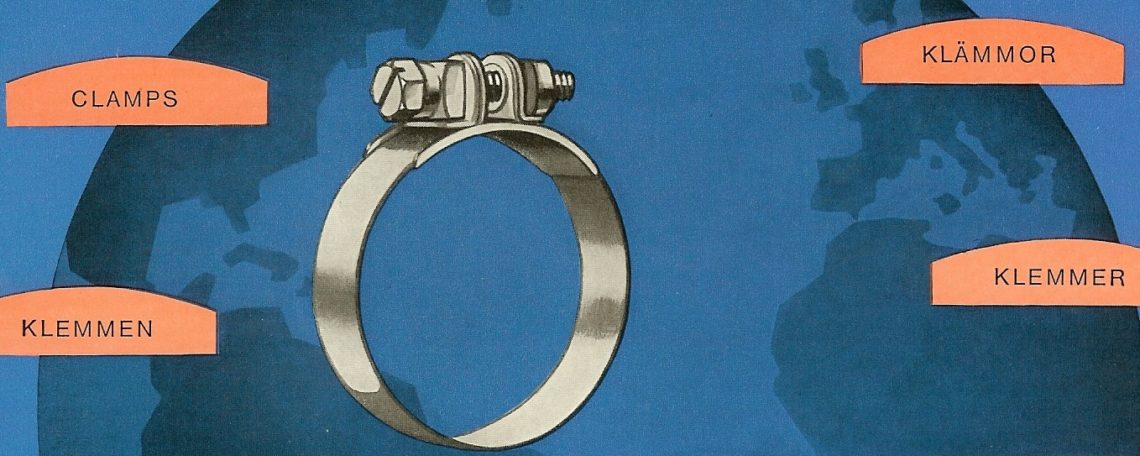This post is also available in: Deutsch
Hose clamp consists of two words: hose and clamp. Just as it comes first in word order, the hose existed before the clamp. Oxford, the English-language dictionary, describes the hose as follows: “A long hollow cylinder of metal, plastic, glass, etc. for holding or transporting something, chiefly liquids or gases.”
When was it invented? As early as 500 BC, the Greek historian Herodotus mentioned a tube: “From this river, the king of the Arabs drew water by means of a tube which had been sewn together from raw oxhides and other skins, reaching into the desert where he had laid large cisterns to store it.”
This sounds like the first ancient pipeline. Since 200 BC in fact, similar hoses were used in Byzantium (modern-day Istanbul) to transport oil from the Caspian Sea. This was then used to heat public baths. It was done this way for many centuries – until Leonardo da Vinci asked himself how people might breathe longer under water, around 1500.
From hose to hose clamp
His answer was a leather tube, stiffened by inserted rings, which was used to equip divers. By 1673, there were hoses made of canvas, then hemp tubes, and in 1843, hoses sealed with gum tree sap. This was the first vulcanization, and thus the first modern hose.
The hose had already been around forever before with its accompanying clamp modern joining technology was invented. Hoses were initially held together with leather straps and hemp ropes. They sufficed for simple connections.
This changed with the industrial revolution and the invention of the steam engine. By now, wire was used, but even that was no longer sufficient for hoses and machine parts that needed to be connected securely and tightly. This is why the hosebinder was made: a flat steel belt with a saddle and a split pin.
The hose clamp then followed as the logical next step. An exhibition by Berlin manufacturer Franz Sauerbier from 1918 shows a clamp for garden hoses – even then, it clearly resembles today’s hose clamps. At nearly the same time, the motorization boom and the associated automotive engineering boom began in Europe and the US. One result was the worm-drive hose clamp, invented in England in 1921.
But already in 1896, the Swedish inventor Knut Edwin Bergström took out a patent for his advanced worm-drive hose clamp. Shortly after, he founded the “Allmänna Brandredskapsaffären E. Bergström & Co.” in 1896, ABA for short. And as of 1949, the entrepreneur Ove Skafte Rasmussen and his Rasmussen GmbH conquered the German and European market with their hose clamp. Both companies merged to become NORMA Group in 2006.
The first clamp in the world?
So, who made the first clamp? There is no clear answer to this – but there is an interesting anecdote from a small village in France.
In the town of Riquewihr, home to 1,100 inhabitants, there is a fountain which was built in 1509. In 1768, the fountain was badly damaged and had to be rebuild. Riquewihr’s blacksmith, Johann Irion, forged a bracket to hold the fountain. This bracket can still be seen at the well today.
It could be the world’s first clamp.




2 responses to “The History of the Hose Clamp”
Justin Allen
The evolution of hose clamps showcases the ingenuity of industrial tools over time. From humble beginnings to modern applications, they remain essential in various industries for securing hoses efficiently.
Nils Bergström
My history knowledge sats Mr Robinsson was the first inventor by forming Jubilee clamps from beginning produced by Terry, Redditch. Later different standards occured, DIN, SMS, US but all with the basic worm gear idea.